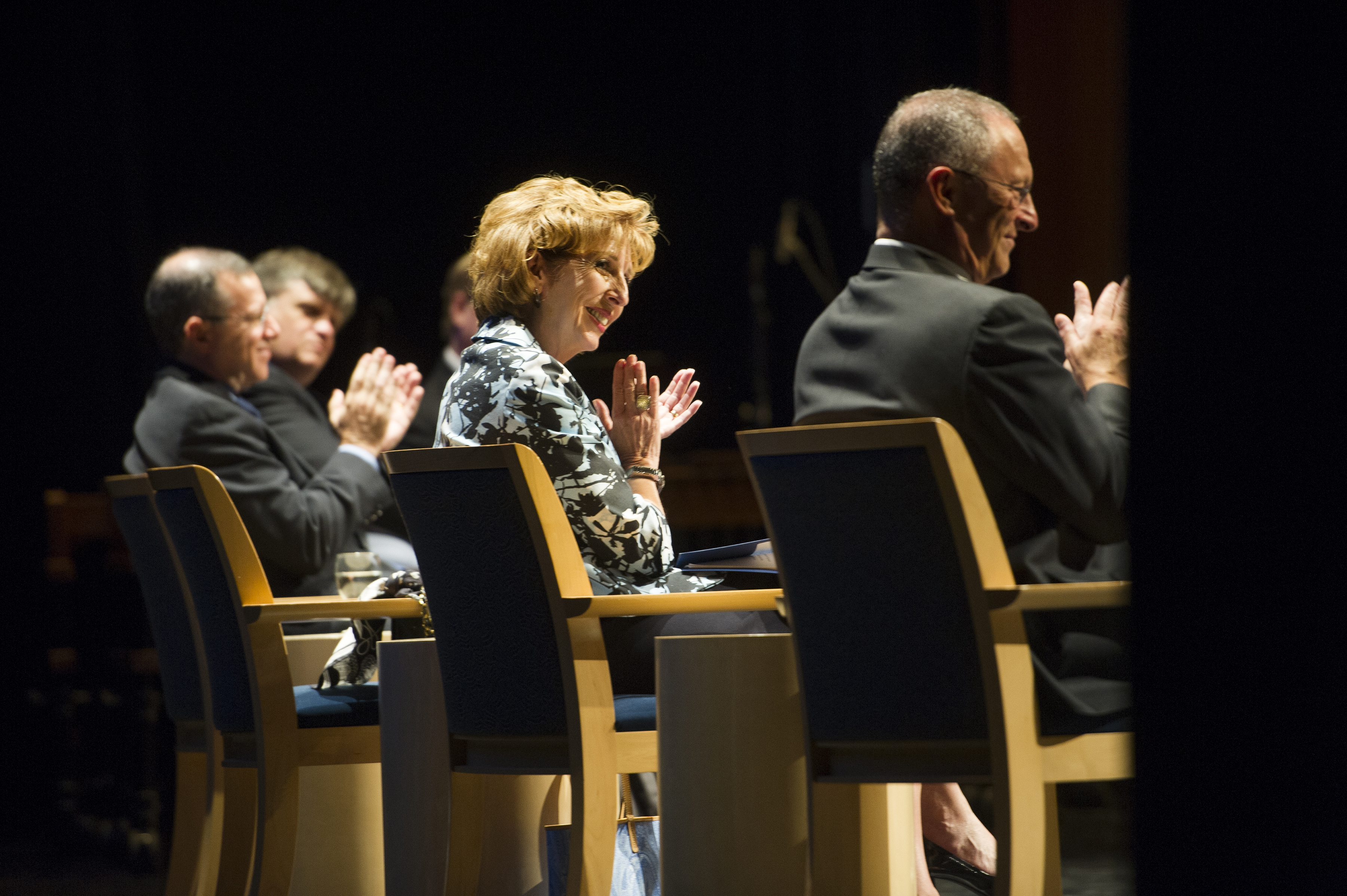
Katehi plans for expanded Sacramento campus, new veterinary hospital.
On Sept. 22, Chancellor Linda P.B. Katehi announced the next phase of the UC Davis University of the 21st Century plan at the fall convocation at the Mondavi Center. The University of the 21st Century plan addresses the changes UC Davis will undergo in the coming years as well as its goals for students, faculty and staff.
“With new trends in teaching, learning, technology and administrative structure coupled with the potential for global impact through education, scholarship and research, the world’s colleges and universities stand at a moment of great change and promise,” a website for the plan states. “As an institution uniquely positioned to break new ground and meet pressing global challenges, UC Davis is determined to lead the way for higher education in the 21st century and beyond.”
Students were invited to share their ideas for the plan through student forums last year. Meetings were also held with ASUCD representatives as well as with faculty, staff and alumni.
“Our plan for the future addresses the quality, scope and breadth of the educational programs we offer and the research we do,” Katehi said. “It will also address campus needs such as new lecture halls, a graduate student center, a new chemistry complex and other campus facilities, to accommodate steady growth in student enrollment and a backlog of deferred maintenance on campus facilities that need upgrading.”
Among these new campus facilities will be a new veterinary hospital, which Dean of the School of Veterinary Medicine Michael Lairmore said is a response to the need for substantial building improvements to the current Veterinary Medical Teaching Hospital. Lairmore believes that the improved hospital, which will likely open in 2026, will cement UC Davis’ status as a leader in veterinary medicine.
“Our rich heritage over the past 60 years brings us to this moment of transformation,” Lairmore said. “To continue to advance veterinary medicine, we seek to reimage how the many disciplines across our dynamic campus can come together to solve the critical problems facing our animal patients.”
Lairmore said that this new hospital will also include an Equine Sports Medicine Complex, which will be separated from the main hospital, in order to offer sport and performance horses improved treatment.
In addition to the new veterinary hospital, the University of the 21st Century plan includes the creation of several other buildings, such as the Jan Shrem and Maria Manetti Shrem Museum of Art, expected to open in the 2016-2017 school year, and a chemistry discovery complex. Additionally, the plan involves the building of a new satellite campus in Sacramento with two new schools that will focus on global health and public policy.
When deciding where to build the new satellite campus, some students hope that the administration will take into consideration the effects this additional campus could have on low income areas.
Additionally, third-year biological sciences major Annie Ashmore worries that the UC Davis administration is too focused on expansion rather than reducing student rates.
“It’s always a bit of a slap in the face when students are told that there’s no way that UC can reduce tuition and fees while making huge administration pay raises and taking on massive, expensive architectural projects at the same time,” Ashmore said.
Although UC Davis had its second highest fundraising year last year, receiving more the $184 million from donors as well as $785 million in research grants, Katehi said that this money will not directly impact the University of the 21st Century plan.
“Our endowment is separate from those funds and it is invested to generate income for scholarships, faculty recruitment, retention and other aspects of our core educational mission,” Katehi said. “So it’s not connected to our plans for the University of the 21st Century in a direct way.”
Instead, the estimated $2 billion project will be funded through several different sources.
“We will finance this work through a combination of revenue sources, including fundraising; a small amount of state funds allocated for capital projects; debt financing through bonds; revenues from self-sustaining housing for faculty and students; and by using some additional university resources,” Katehi said. “Overall, the amount of spending we’re planning is comparable to what we normally invest in capital projects, and when you add it up over a decade, we get to a minimum of $2 billion.”
Katehi said that although the renovations and increased campus size are key components of the University of the 21st Century plan, the plan goes beyond these facets and will include an effort to increase four-year graduation rates and improve the educational programs offered to students.
“The University of the 21st Century must be a place that enhances the ability of our students, faculty and staff to make new discoveries, to create new and optimum forms of scholarship,” Katehi said. “We want to be a place where all of us, honestly and respectfully, critique, analyze and discuss information, knowledge and the challenges of our time even if those discussions are sometimes difficult or make us uncomfortable. That is what a truly rich and rewarding education is all about.”


